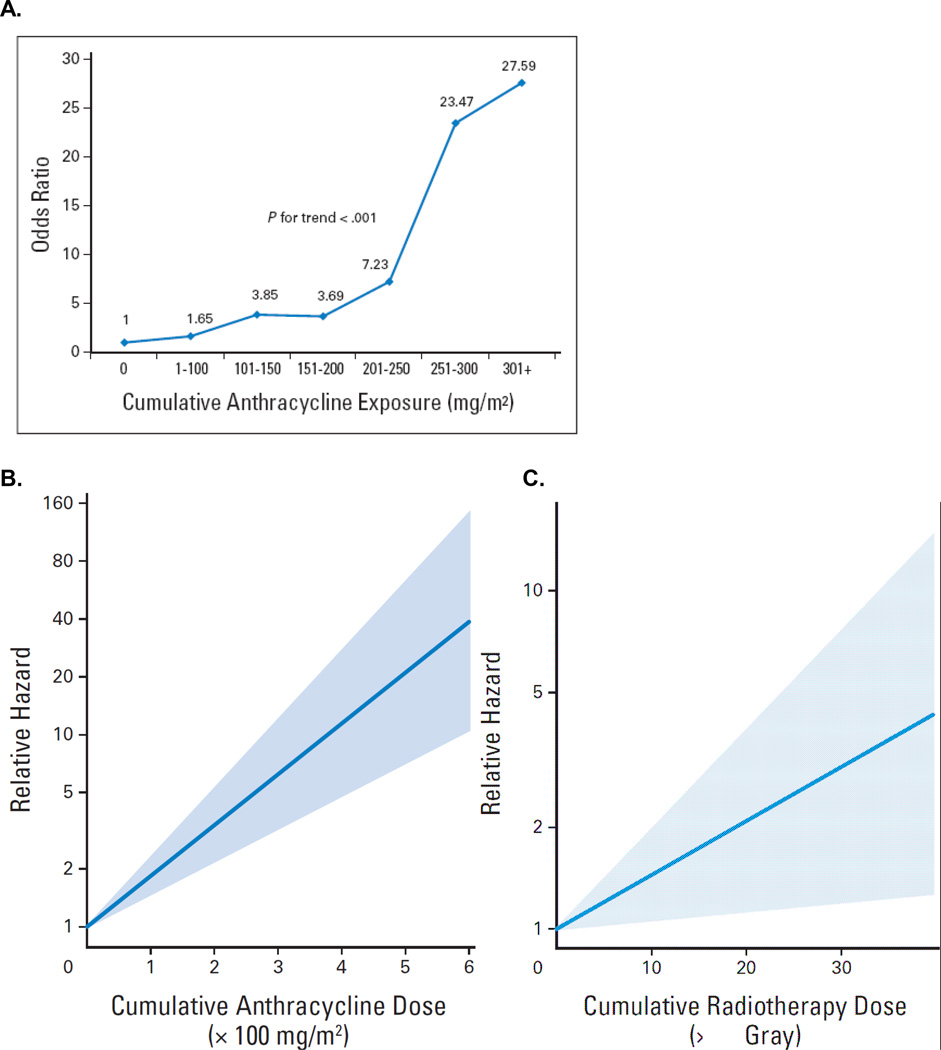Figure 1. Risk of cardiomyopathy and CHF by cumulative lifetime anthracycline (A and B) and radiotherapy dose (C).
1A: Dose-response relationship between cumulative anthracycline exposure and risk of cardiomyopathy. Patients with no exposure to anthracyclines served as the referent group. Magnitude of risk is expressed as odds ratio, which was obtained using conditional logistic regression adjusting for age at diagnosis, sex, and chest radiation.
Blanco JG, Sun CL, Landier W, et al: Anthracycline-related cardiomyopathy after childhood cancer: role of polymorphisms in carbonyl reductase genes--a report from the Children's Oncology Group. J Clin Oncol 30:1415–21, 2012.
1B, C: Association between cumulative anthracycline dose and hazard ratio, and cumulative radiotherapy dose and hazard ratio (in equivalent 2-Gray [Gy] fractions) for congestive heart failure, based on the Cox model that also included sex, age at diagnosis, cisplatin, vincristine, cyclophosphamide, ifosfamide, and congenital heart disease. No cardiotoxic treatment (dose = 0) was the reference value. For cardiac events, effect of anthracycline dose is shown for zero irradiation dose and effect of irradiation dose is shown for zero dose of anthracycline.
van der Pal HJ, van Dalen EC, van Delden E, et al: High risk of symptomatic cardiac events in childhood cancer survivors. J Clin Oncol 30:1429–37, 2012.

